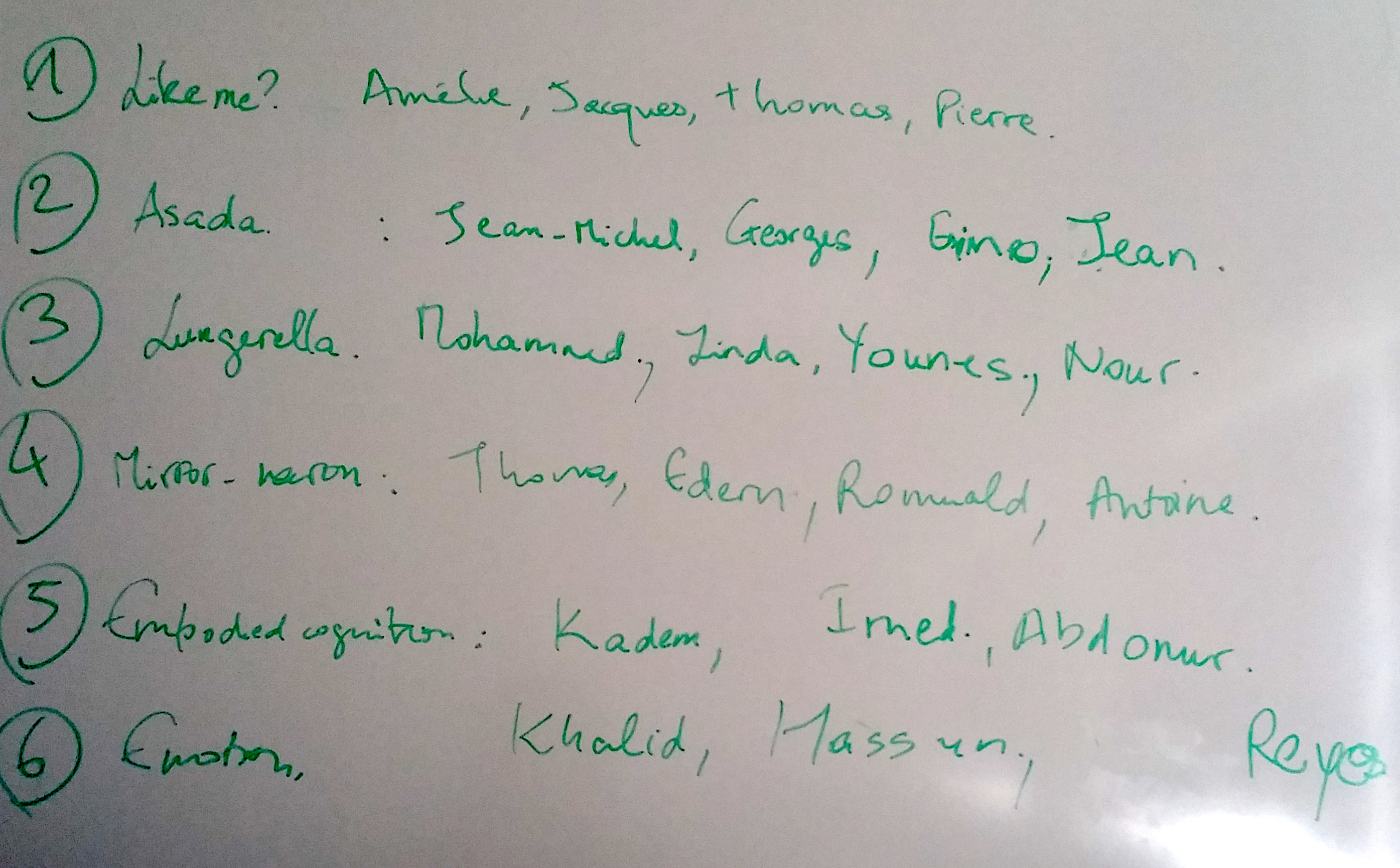Cognitive developmental approaches for sociable artificial agents
Aller à la navigation
Aller à la recherche
The session includes the presentation of 6 articles, and a final summary.
The presentations of the articles are to be done for 10 minutes + 5 minutes for questions, in groups of 3 to 4 students. The list of the articles is :
- C. L. Nehaniv and K. Dautenhahn. Like me?-measures of correspondence and imitation. Cybernetics & Systems, 32(1-2):11–51, 2001. URL : https://pdfs.semanticscholar.org/2113/0992d0d428cef1388650dbd0338a7627303c.pdf
- M. Asada, K. Hosoda, Y. Kuniyoshi, H. Ishiguro, T. Inui, Y. Yoshikawa, M. Ogino, and C. Yoshida. Cognitive developmental robotics: a survey. IEEE Transactions on Autonomous Mental Development, 1(1):12–34, 2009 URL: http://www.er.ams.eng.osaka-u.ac.jp/Paper/2009/Asada09g.pdf
- M. Lungarella, G. Metta, R. Pfeifer, and G. Sandini. Developmental robotics: a survey. Connection Science, 15(4):151–190, 2003 (42p)
- Rizzolatti, Giacomo, and Laila Craighero. "The mirror-neuron system." Annu. Rev. Neurosci. 27 (2004): 169-192. URL : http://psych.colorado.edu/~kimlab/Rizzolatti.annurev.neuro.2004.pdf
- Wilson, Robert A. and Foglia, Lucia, "Embodied Cognition", The Stanford Encyclopedia of Philosophy (Spring 2017 Edition), Edward N. Zalta (ed.). URL : https://plato.stanford.edu/archives/spr2017/entries/embodied-cognition
- C. Breazeal (2003). Emotion and Sociable Humanoid Robots. International Journal of Human Computer Interaction, vol. 59, pp. 119-155. URL : http://robotic.media.mit.edu/wp-content/uploads/sites/14/2015/01/Breazeal-IJHCS-03.pdf
Attribution des présentations:
